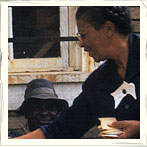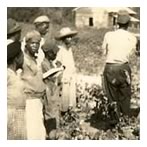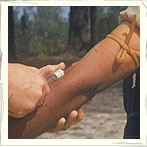As predicted in the first (and until now only) post about my promise to read one book a month until I finish medical school, I have fallen off the bandwagon. In June I read with interest a trade book on Jean-Martin
Charcot's three most famous female hysterics. One August weekend while traveling I read the most important chapters in Mary Poovey's
Making a Social Body for editing my book manuscript, but I'll spare you the details, as it's highly theoretical. Then Disciple Bible Study started with
Adam Hamilton's Making Sense of the Bible, and since Labor Day weekend we have read all of Genesis and most of Exodus. For September I am petitioning to get 1 book manuscript on which I am credited as "content consultant"; 2 articles on Natalie Zemon Davis's experimental and ground-breaking book
The Return of Martin Guerre and the way historians marshal evidence; and 1 graduate colleague's dissertation chapter accepted in place of the month's "book." Then, despite my protests that I am already in the middle of three books (the Bible, Barbara Brown Taylor's
Learning to Walk in the Dark, and
MFK Fisher's The Gastronomical Me), Dear Husband tried to start
Salmon Rushdie's Midnight's Children with me last night, but I insisted on hearing the introductory essay first because I know nothing about it except that it earned Rushdie a fatwa--and of course DH barely got two pages in before I was out like a light.
In July I finally got around to Susan Reverby's masterful
Examining Tuskegee: The Infamous Syphilis Study and Its Legacy. To be honest, whether I read this particular book or the enormous, 600+-page volume Reverby had edited entitled
Tuskegee's Truths: Rethinking the Tuskegee Syphilis Study was 50/50. I had planned to pick up
Tuskegee's Truths, figuring it would be good to be exposed to several different authors' perspectives on this important event in American medical history. In particular I wanted to read Vanessa Northington Gamble's chapter on African-Americans and medicine. But when I got to the library, I discovered
TT was in the stacks while
ET was available in the History Library, so I settled for the slimmer retrospective.
Examining Tuskegee provides a brief overview of the study itself, but that work has also been done by other historians. So Reverby focuses on the Study's legacy. Because "Tuskegee" has been maligned as everything that was wrong with 20th-century American medicine, she tries to walk the fine line between a historian's objectivity and an activist's outrage. Yes, the study was racist from start to finish, but not for the reasons you may have heard. (No one was purposefully infected with syphilis.) No, the study cannot be excused by "laxer" experimental standards of the time. No, it was not a secret. And because it produced no useful medical information, its questionable methods cannot be excused. This bad science continued for four decades out of a combination of inertia, misplaced paternalism, and the attempt to obtain some little data after all the years and expense.
The study was originally designed to learn about the effects of untreated late latent syphilis in African-American men. (By definition, latent syphilis is not infectious and beyond the reach of penicillin.) The U.S. Public Health Service (PHS) researchers were particularly interested in black men because of a) the assumption that syphilis was common among them and b) the widespread scientific truism that they belonged to a more "corporeal" race and were more likely to develop cardiovascular complications (like inflammation of the aorta). White men by contrast were thought to be more "intellectual" and therefore more likely to develop neurological complications. However, this assumption was not tested, and white men in Macon County, Alabama, who wanted to join the study for its free "treatment" were turned away. Later, the PHS contradicted its own initial warrant and tried to generalize its results to all kinds of bodies infected with syphilis. Women were not enrolled "so that the question of congenital [syphilis] could be eliminated."
In 1932, mercury preparations were still the most common treatment for "the great pox." The PHS didn't have enough money to treat everyone, so it developed a study based on the inability to treat. Nevertheless, it lied to participants that they
were being treated. In the 1940s, penicillin was discovered as a cure for syphilis. During World War II, the PHS actually prevented study participants from being called up to the US military so that they would not be diagnosed with syphilis and treated with penicillin. Stop and let that fact sink in for a moment. One arm of the US government that claimed to be helping its citizens prevented another arm of the government from actually helping. From the late 1940s to the early 1970s, many of the men did receive antibiotics from various sources for other infections. This is important for three reasons. 1) The PHS was evidently no longer providing a service (health care) that these poor, rural Alabamans could not otherwise obtain. 2) These drugs may have affected the course of their syphilis if they were not truly latent. 3) Therefore, the study results were bogus by its own definition ("untreated latent syphilis") in addition to being racist.
To their credit, the PHS did try to divert women and potential enrollees whom they diagnosed with active syphilis to treatment. But study workers did not always clarify to participants that they
had been diagnosed with latent syphilis ("bad blood" could mean a lot of things, including merely fatigue at the end of winter, when fruits and vegetables were in short supply). They did not always diagnose the men properly, so their sexual partners and sometimes their children contracted the disease from them. Most importantly and paternalistically, they did not ask the men whether they wanted to donate their bodies to a scientific study. Rather, during life they were offered "therapeutic" spinal taps, aspirin, mercury salves, and "iron tonics." After their deaths, the PHS offered to pay the men's funeral costs if they would allow their bodies to be autopsied. Nurse Eunice Rivers also helped the men in other ways, much like a social worker.
Although the PHS knew that the African-American men of Macon County would not have participated in the Tuskegee Study if they had been told the truth, they still published more and less cleaned-up accounts in the medical literature of their work with these "volunteers." Now and again a scientist would write the study leaders to protest its racism and bad science, but it continued until an AP reporter broke the story in 1972. It quickly became a tale of medical overreach sponsored by the government, of guinea pigs duped into dying for science, of "America's Nuremberg." Tuskegee contributed to contemporary discussions of consent and experimental design; President Clinton issued
an official apology in 1997; and it remains a flashpoint for race and medicine four decades later. Of course it is much more complicated than that, but I think I have squeezed everything I can into this review. If you would like to know more, click on the image links in this post; they will take you to the website for
Examining Tuskegee. Or, you could read the book!
We are four days into October, and because Psychiatry requires half as much studying as Internal Medicine did, I have decided to climb back on the bandwagon with a translation of Ute Daniel's
The War from Within:German Working-Class Women in the First World War. Since my next exam falls exactly at the end of the month, I will have all weekend to write up my impressions. Watch this space!
















